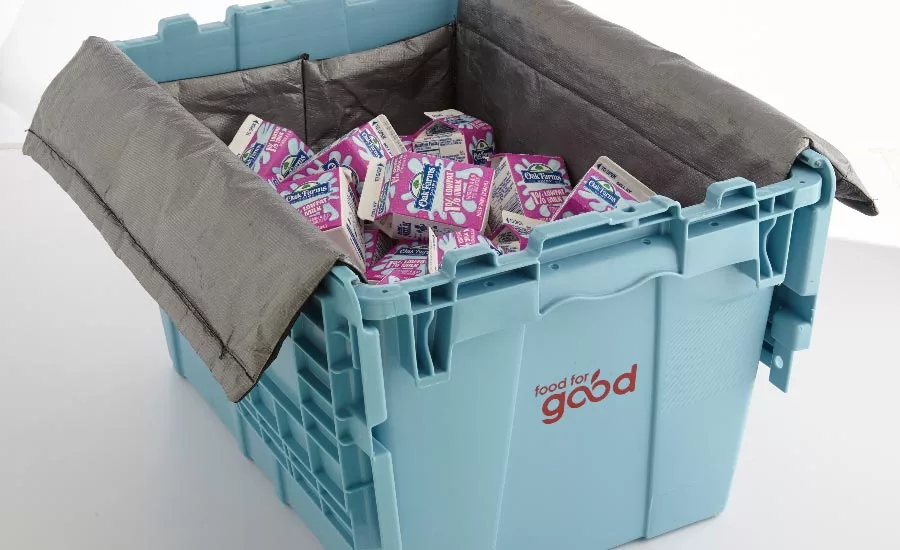TECH FLASH
PepsiCo’s keeping food fresh more affordably
The Food for Good initiative aims to help relieve child hunger through expertise and innovation

It is a harsh reality that in this land of abundant amber waves of grain, 13.1 million US children live in food-insecure households, according to the USDA. When PepsiCo employees were looking for ways to make a meaningful impact in inner city communities, they wanted to help children that couldn’t access the nutrition they needed.
“We believed that PepsiCo, owner of the country’s largest ‘food-moving fleet,’ could help bring critical food and nutrition to kids in need,” says Matt Smith, director of Food for Good, a purpose-driven business initiative launched in the summer of 2009. “Using our expertise in taste, nutrition and logistics, PepsiCo employees provided children in low-income Dallas neighborhoods with healthy breakfasts, lunches and snacks.”
The initiative has grown since then, delivering 40 million servings all year round in 14 US cities and has a goal to deliver 20 million servings per year across 20 cities by 2020. In order to meet the target, Food for Good tapped into PepsiCo’s cross-sector partnerships, brands, products and industry knowhow to deliver food to children who might not have been previously reached.
“Food for Good is committed to delivering and developing products that are nutritious, affordable and convenient,” Smith says. “We continually innovate to expand our impact and meet the needs of low-income families.”
When developing new products or packaging, the Food for Good team thinks about the full lifecycle of the product, including its distribution and consumption by kids in need. This was the motivation behind its 2012 launch of a Quaker Maple Brown Sugar Chewy bar made with 16 grams of whole grains, portioned for a healthy breakfast or snack. Also, this past summer a new Life cereal in a “bowlpack” was introduced designed for kids to peel off the top and pour milk directly into a single-serve bowl.
Since Food for Good first started delivering meals in the summer heat, keeping the fresh food at safe temperatures was crucial. Additionally, the refrigerated trucks were struggling to maintain temperature during the day and needed regular maintenance since they were frequently running.
“The PepsiCo Research & Development team was looking to develop technology to enable chilled distribution in markets without adequate infrastructure,” Smith says. So, a cold-box design was developed to maintain food safe temperatures in the heat. “This innovation features phase change material, highly effective insulation and durable, stackable boxes to facilitate simple and safe warehouse and delivery processes.”
Because this was meant to be a delivery solution, it cut FFG’s cost by replacing expensive refrigerated trucks and also allowed items that both don’t need refrigeration and ones that do to be shipped on the same truck. Additionally, the cold boxes have allowed delivery of fresh meals to sites that may not have had the opportunity otherwise due to lack of refrigerated storage.
“Food for Good supports PepsiCo’s business by contributing to the research and development of new products and technologies,” says Smith. “Essentially FFG functions as a cost and revenue neutral ‘innovation incubator’ for our nutrition business.”
The cold-box technology exemplifies this, as Gatorade has now adopted cold boxes as a low-cost solution for the transportation and short-term storage of refrigerated food and beverage. In 2015, the brand shipped $8.9 million in Gatorade protein bars in cold boxes. It is estimated that 75 percent of that product was at risk of melting during delivery. Other PepsiCo brands, such as Tropicana and Naked Juice, are also looking into using the cold boxes.
“We’re proud of Food for Good’s breakeven model. It drives the development of new business approaches, products and technologies,” says Smith.
Looking for a reprint of this article?
From high-res PDFs to custom plaques, order your copy today!






